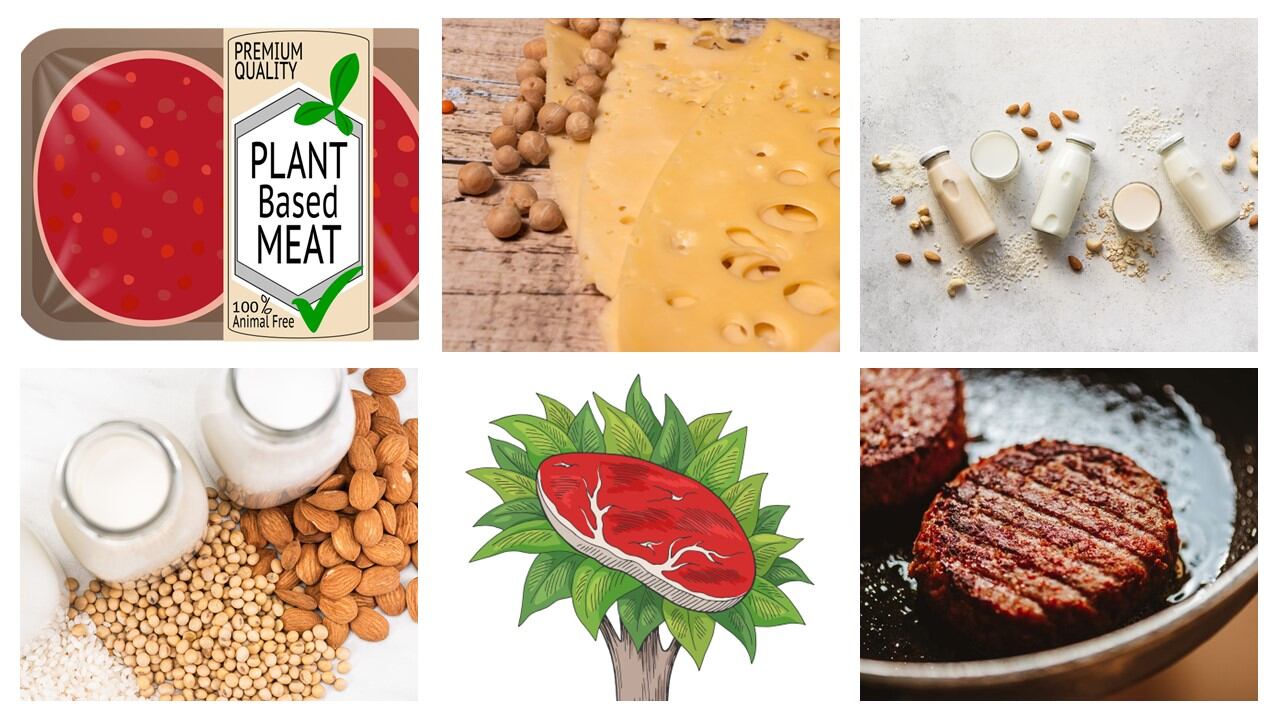For dairy alternatives, SPINS US retail data shared with FoodNavigator-USA shows:
Plant-based milk ($2.73bn category): Oat milk and shelf-stable coconut milk driving volume
- 12 weeks to October 30: $sales +10.5%, unit sales -3%
- 52 weeks to October 30: $sales +7.6%, unit sales -1.4%
Over the latest 12-week period, all of the volume growth came from refrigerated oat milk ($+25.2%, units +7.5%), shelf-stable oat milk ($+35.5%, units +24.1%), and shelf-stable coconut milk ($ sales +91.1%, units +86.3%).
Dollar sales of almond milk – the largest segment of the category – were up +5.5% (refrigerated), and 6.9% (shelf-stable); while units were down -7.5% (refrigerated) and -6.6% (shelf stable) in the latest 12 weeks, taking the overall plant-based milk category into negative territory for unit sales.
Dollar sales of soymilk – once the category leader – were down -0.7% (refrigerated), and up +12.7% (shelf-stable); while units were down -9.5% (refrigerated) and -8.8% (shelf stable) in the latest 12 weeks.
Plant-based cheese ($217.4m category): Cheddar slumping, but some specialty cheeses performing well
- 12 weeks to October 30: $sales -4.9%; unit sales -10.7%
- 52 weeks to October 30: $sales -3%; unit sales -5.2%
Shredded and grated ($23.5m category): Cheddar and Mozzarella declined double digits, but Parmesan and Mexican blends were up significantly.
Sliced and snack ($18.7m): Cheddar, American and Provolone declined, but Swiss was up.
Blocks, tubs, wheels ($6.2m category): Cheddar and feta declined, but blue varieties, chevre, brie, and mozzarella were up.
Plant-based yogurt ($391.5m category): Coconut the star player, oat fading fast
- 12 weeks to October 30: $sales +2.9%; unit sales -8.7%
- 52 weeks to October 30: $sales +5.4%; unit sales -3.8%
Within this segment (which is explored in more detail in a recent episode of our Soup to Nuts podcast), the dynamics are a little different to the milk market.
Within yogurt, coconut is the biggest subsegment, growing at +11.6% in dollar sales in the latest 12-week period, and up +2.7% in unit sales.
Dollar sales of almond-based yogurts, #2 in the category behind coconut, were down -7.4% while unit sales were down -17.7%.
Cashew-based yogurts fared better, with dollar sales up 11.3% and unit sales flat.
Oat-based yogurt, meanwhile, has not set the world on fire, with dollar sales down -62.7% and unit sales down -75.5%.
Sales of drinkable plant-based yogurts – which accounted for 2.5% of the plant-based yogurt category – were up triple digits, albeit off a tiny base, with dollar sales up 116.3% and units up +95.1% in the latest 12-week period.
Source: The US retail figures above combine SPINS multi-outlet (MULO) channel data powered by IRI covering food, drug and mass stores; and SPINS natural enhanced channel data, which includes co-ops, associations, independents, and large regional chains, but excludes some key players such as Whole Foods & Trader Joe’s. They do not cover convenience stores or foodservice sales, which are becoming increasingly important for plant-based milk.
Meat alternatives: Continued lackluster performance
In the meat alternatives segment, US multi-outlet retail data from IRI (this excludes the natural channel) for November 2022 vs November 2021 shows that dollar sales of refrigerated meat alternatives are declining in double-digits in conventional grocery retail, while frozen products are up modestly in dollars, although down double digits in volume.
According to Anne-Marie Roerink at 210 Analytics: "Refrigerated plant-based meat alternatives, typically found in the meat case or produce department, continued to lose sales in November 2022 when compared to the prior year as well as the year before.
"Most refrigerated meat substitute forms were down year-on-year in both dollars and pounds. Ingredient cuts (convenient, recipe ready pieces) were the one exception on the dollar side."
At the same time, she noted, "Prices for refrigerated plant-based meat alternatives have been very stable over the past year, at +3.3% on a per pound basis. This is a substantially different picture than that of total food and beverages and meat/poultry [where prices have risen far more sharply]."
Meat alternatives: November 2022 vs November 2021
- Frozen and refrigerated meat alternatives combined ($82.6m): $ sales -3.8%, volumes -11%
- Frozen meat alternatives: $ sales +2.3%, units -10.8%
- Frozen meat & poultry conventional: $ sales +6.4%, units -7.2%
- Refrigerated meat alternatives: $ sales -16.8%, volumes -19.5%
- Fresh and processed conventional meat: $ sales +1.9%, volume -5.4%
- Total food & beverage: $ sales +10.4%, units -2.8%
Source: US retail sales: November 2022 vs November 2021, IRI MULO data crunched by 210 Analytics
'The reduction in plant-based meat alternative assortment in the refrigerated areas is speeding up'
Meanwhile, retailers have started cutting back their selections, she said: "Retailers carried fewer items per store in November 2022 than they did in the same month in 2021, at -12.1%. When comparing the items per store reducing over the full year versus November, it appears that the reduction in plant-based meat alternative assortment in the refrigerated areas is speeding up."
As for merchandising, there was a solid rationale behind putting meat alternatives in the fresh meat case, with early data suggesting this could unlock an incremental growth opportunity.
However, recent weakening performance has prompted a lot of discussions about store placement, with some commentators observing that the fresh meat case is highly commoditized and dominated by private label brands, making it a tough place to be during an inflationary period.
Put another way, said Bob Nolan, SVP demand science at Conagra Brands (owner of the Gardein brand), which acquired alt meat brand Gardein in 2018 via the acquisition of Pinnacle Foods: “If you have slow-turning products in a place that's fairly perishable, that’s high risk, and there's no way the space supports 20 manufacturers making burger patties.”
In the frozen aisle, by contrast, “products are almost exclusively branded,” he noted, and right now at least, frozen is more affordable than eating out, and represents better value than fresh.
Shakeout to come?
Several commentators have also noted assortment changes as retailers pull out poor performers given poor repeat rates in the category, with Quorn USA president Judd Zusel telling us in a recent interview that: “Over the last year over 115 new SKUs have come in, and you see a number of brands having very low repeat purchase rates, in the 10% range.”
“Our repeat is about 47%, which is the highest in the category, and on some of our core SKUs, we are seeing an increased rate of sale, so that is positive. But we really do need to see the economy come back a little bit and see consumers have a little bit more money in their pockets, so we won't be in the kind of share trading moment that we're in right now within the category.”
Price, health, consumer perceptions
As to whether price is what’s holding the category back, not everyone is convinced, with some more premium players performing well, such as Daring Foods, which deploys pricy high-moisture extrusion to make its plant-based chicken pieces, and is going from strength to strength, according to co-founder and CEO Ross Mackay.
“I feel like price is not the barrier to entry for consumers in this category,” Mackay told us earlier this month. “The problem is that most plant-based meat products are inferior to animal derived protein and they’re not seen by consumers as tastier or healthier. Fundamentally, we need better products. There are lot of products on the shelf that don't meet consumers’ needs on health, taste and texture.”
That said, other commentators point out that if consumers are really seeking out products with the most alluring Nutrition Facts label, brands such as OZO Foods – with more fiber and less saturated fat than rivals – would still be on the market (brand owner JBS recently pulled the plug on its Planterra Foods plant-based meat division), and soymilk would be outperforming oat and almondmilk.
When it comes to the ‘hyper-processed’ slur, meanwhile, it is hard to determine the extent to which the notion that ‘fake’ meat is too processed is holding the market back, say observers, who note that there are plenty of highly-processed keto packaged food products on the market that are performing well suggesting shoppers will accept ingredients that are not in their kitchens at home (allulose, erythritol) because the products are delivering a clear benefit (less sugar, lower net carbs etc).
Shopper data from Kroger, its data partner 84.51° and the Plant Based Foods Association shows that:
- Kroger posted a 1.5% year-over-year increase in sales of plant-based foods in 2021 after a bumper year in 2020 (when sales surged 24% vs 2019).
- Migration analysis shows that plant-based meat and dairy products are displacing animal products, albeit on a tiny scale.
- Consumer survey data shows that personal health concerns continue to trump sustainability and animal welfare as purchase drivers for plant-based foods.
- Asked what would make them more likely to consume plant-based, 64% of shoppers who decreased purchases of plant-based in 2021 said lower pricing and/or more frequent sales, while 58% said better taste and/or texture.
Plant-based trends in the foodservice channel: 48.4% of restaurants offer plant-base alternatives
According to Datassential, which published a Plant Forward Opportunities report this summer in partnership with the CIA:
- 48.4% of restaurants offer plant-based alternatives (meat alternatives, dairy alternatives, vegetarian callouts, etc), in 2022 vs 30% in 2012. Popular items include veggie burgers, Mediterranean bowls, Buddha Bowls, and Avocado toast.
- Oatmilk is “exploding” on menus.
- Fast Casual is the top segment to feature plant-based alternatives, with 64.7% offering them.
- Plant-based ice cream is now on 25.4% of plant-based dessert menus.
- Plant-based buffalo chicken was up 97% in the last year on apps/entrees/sides menus featuring plant based alternatives.
November 2021 survey of 1,000 US consumers:
- 40%: “I prefer plant-based foods that taste like traditional counterparts, like plant-based beef or milks”
- 60%: “I prefer plant-based foods that showcase the fruit or veg instead of mimicking another food”
- “We began to hear in surveys comments like, ‘I don't need my peas to pretend to be a cheeseburger…’”
April 2022 survey of 1,500 consumers:
- Barriers to plant-based dishes include taste, price, and concerns about not getting enough protein or not feeling satisfied.
- 57% of consumers were trying to increase consumption of fruits, veggies, and whole grains.
- 21% were “generally trying” to decrease meat consumption, whereas only 7% are looking to decrease chicken consumption.
- 24% said they were trying to increase consumption of dairy alternatives, with digestive health often cited.
- 29% were looking to increase consumption of nuts, nut butters, and beans.
- 46% of consumers overall believed plant protein is as good and as complete a protein source as meat, whereas only 36% of daily meat eaters agreed.
- (To paraphrase): If you’re going to order plant-based or plant-forward on a menu, what’s your preference? 23% selected plant forward dishes with an emphasis on wholefoods, while 18% selected meat analogs.


